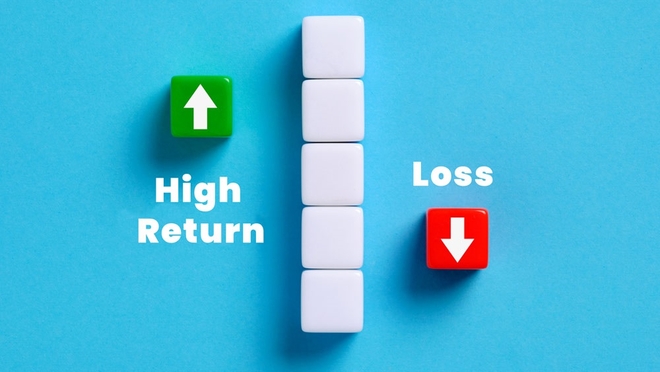
Choosing mutual funds solely based on their returns without considering other factors is similar to buying a car based on its top speed. While speed is important, it overlooks crucial aspects such as fuel efficiency, safety features and the intended use of the vehicle. Imagine buying an F1 car to go vegetable shopping through the busy streets of Mumbai.
The same is the case with mutual funds. Investing in funds based on their returns alone - and not looking at their riskiness, your time horizon and goals - can lead to potential disasters. Here's why:
Small-cap funds
Even the worst-performing small-cap fund has delivered nearly 20 per cent annual returns in the last decade. And that's the worst fund.
Admittedly, even we'd chop off such a fund's hand, but unfortunately, the devil is in the details. Go beyond the funds' returns, and you'll notice that the numbers hide years of frustration.
That's right, small-cap funds have a tendency to experience long periods of zero returns. In fact, of the 10 small-cap funds with a 10-year history, six delivered zero returns for three years or more! Repeat, even the best of small-cap funds can run dry for 36 months and more.
Moral of the story : If you have to pick a small-cap fund, ensure you have a longer time horizon, spanning at least seven years and are prepared to experience volatility.
Small-cap funds can take long breathers
Six of the 10 longest-serving small-cap funds delivered zero returns for three years or more in the last decade
| Name of the scheme | 10-year returns (%) | Longest period of zero returns |
|---|---|---|
| Aditya Birla Sun Life Small Cap | 19.26 | 3 years 4 months |
| DSP Small Cap | 25.23 | 3 years |
| Franklin India Smaller Companies | 23.7 | 3 years 1 month |
| HDFC Small Cap | 22.5 | 3 years |
| Nippon India Small Cap | 28.74 | 3 years |
| Sundaram Small Cap | 22.46 | 3 years 4 months |
| Note: Returns of direct plans as of December 31, 2023 | ||
Short- to medium-duration debt funds
These mutual funds are positioned as an attractive alternative to fixed deposits (FDs), promising higher returns at a slightly higher elevated risk. Even we recommend the shorter-duration funds as a better choice.
So, when investors go shopping, they often choose funds that deliver the highest returns. Look at the table below, and you'll see some of these funds - which typically generate single-digit returns - offering as much as 27 per cent returns!
Deceitful debt funds
Debt funds can offer abnormally high returns due to recoveries from defaulters, which may be a one-off instance (in %)
| Name of the scheme | Category | 2019 | 2020 | 2021 | 2022 | 2023 |
|---|---|---|---|---|---|---|
| BOI Short Term Income Fund | Short duration | -12.86 | -0.51 | 3.46 | 27.43 | 6.43 |
| JM Low Duration Fund | Low duration | -11.96 | 26.91 | 3.44 | 4.58 | 7.05 |
| Nippon India Strategic Debt Fund | Medium duration | -2.59 | -23.07 | 18.09 | 2.60 | 7.62 |
| ABSL Medium Term Fund | Medium duration | -3.78 | 8.94 | 7.69 | 25.73 | 7.69 |
| Note: Returns of direct plans for the last five calendar years | ||||||
However, a closer look reveals that these impressive returns are a consequence of past mistakes.
You read it right. These funds had meaningful exposure to defaulting issuers, resulting in negative returns in the years preceding the high-return period. The elevated returns are, in fact, a result of recoveries.
Moral of the story : Don't invest in a debt fund for their lofty returns; invest in them to protect your capital. In fact, seeing a debt fund delivering high returns should instantly raise a red flag in your head.
Equity savings funds and conservative hybrids
These two types of funds are favourites among conservative and first-time investors for two reasons:
-
These funds can provide stable returns
- These funds have an equity exposure of less than 40 per cent on average, meaning they are less volatile
However, within these categories, some funds display surprisingly high double-digit returns. While they may be very attractive, given these hybrid funds deliver equity-like returns, a deeper look reveals a concerning trend: the very same funds are also responsible for delivering some of the worst returns in their category.
In other words, these so-called stable funds are actually as volatile as an equity fund and, therefore, hardly meet your investment objective. As a safe investor, you wouldn't want a fund to give you 18 per cent returns one year and lose you 13 per cent in the next, would you?
Not-so-stable funds
Although hybrid funds have less than 40 per cent average equity exposure, some funds can be more volatile than steady
| Name of the scheme | Category | 2023 returns (%) | Worst performance in last 5 years (%) |
|---|---|---|---|
| HSBC Equity Savings | Equity savings | 18.09 | -12.68 |
| Nippon India Equity Savings | Equity savings | 13.33 | -27.82 |
| DSP Equity Savings | Equity savings | 13.17 | -10.50 |
| Nippon India Hybrid Bond | Conservative hybrid | 11.14 | -15.49 |
| Note: Returns of direct plans. Worst performance is calculated based on the least one-year return in the last five years, computed on a monthly basis. | |||
To conclude, when choosing mutual funds, remember that high returns are just one piece of the puzzle. Much like selecting a car for practical use rather than just speed, it's essential to consider your objectives, risk tolerance and time horizon and not just an investment's returns.
Because if it seems too good to be true, it probably is.
Also read: Forget SIP, STP can earn you more money








